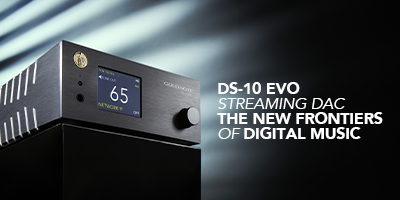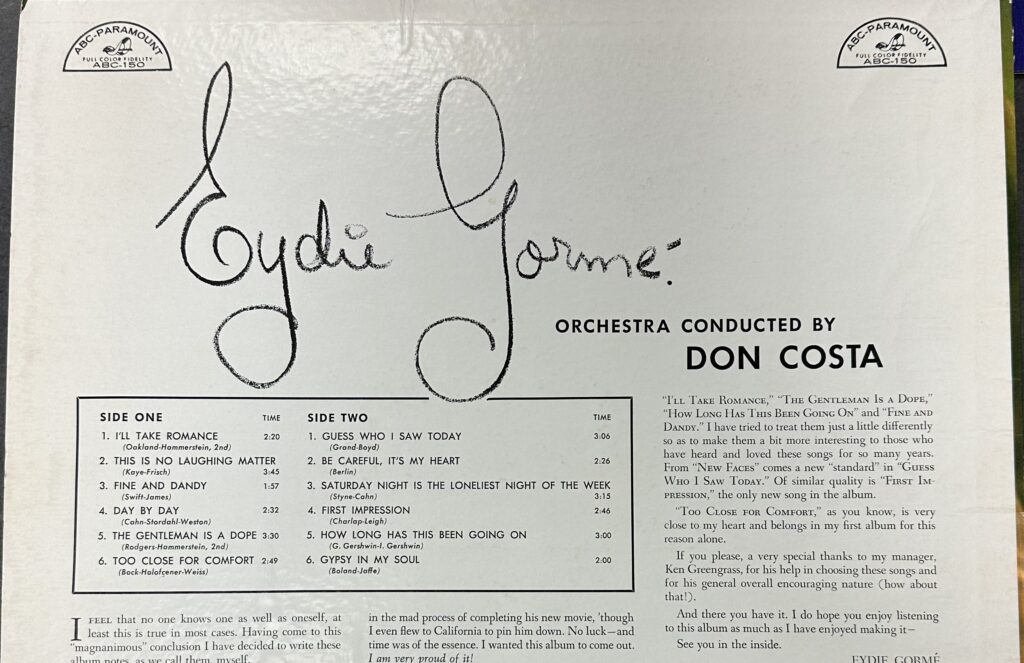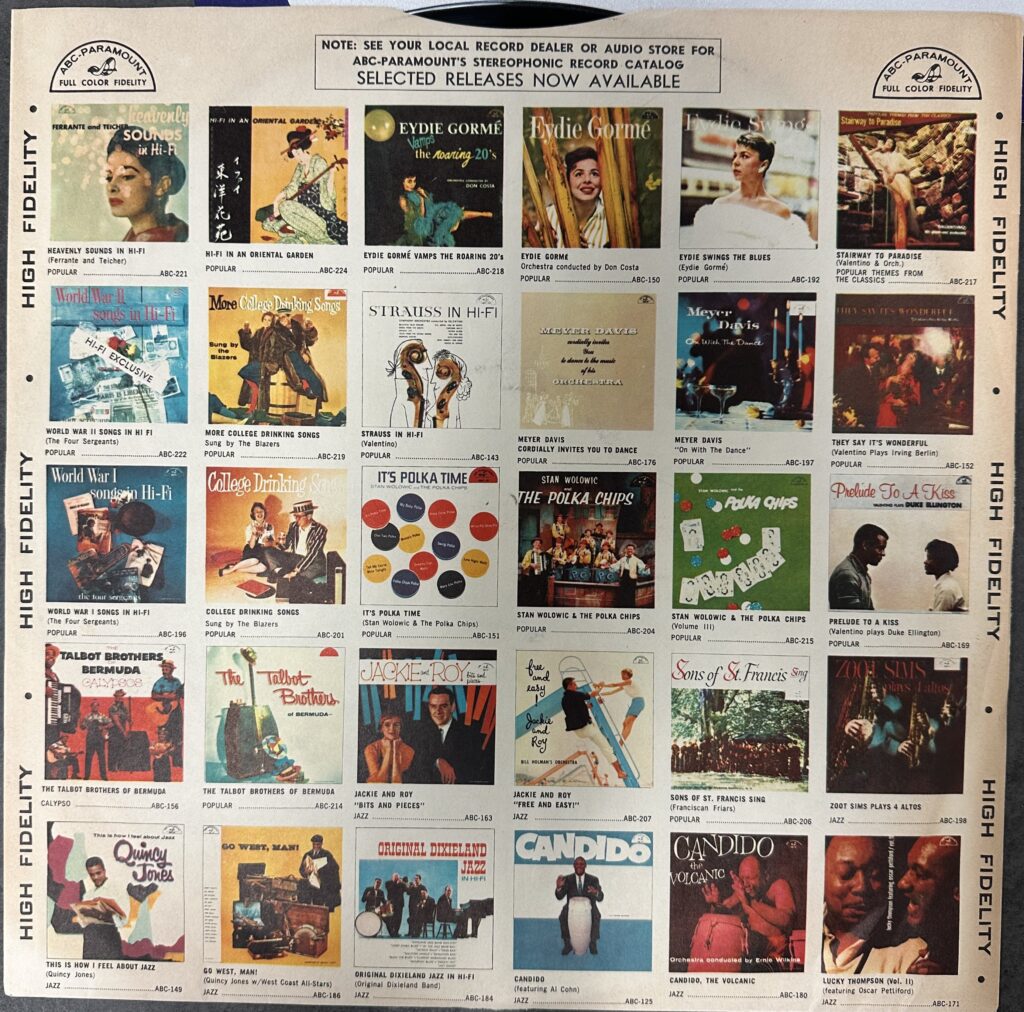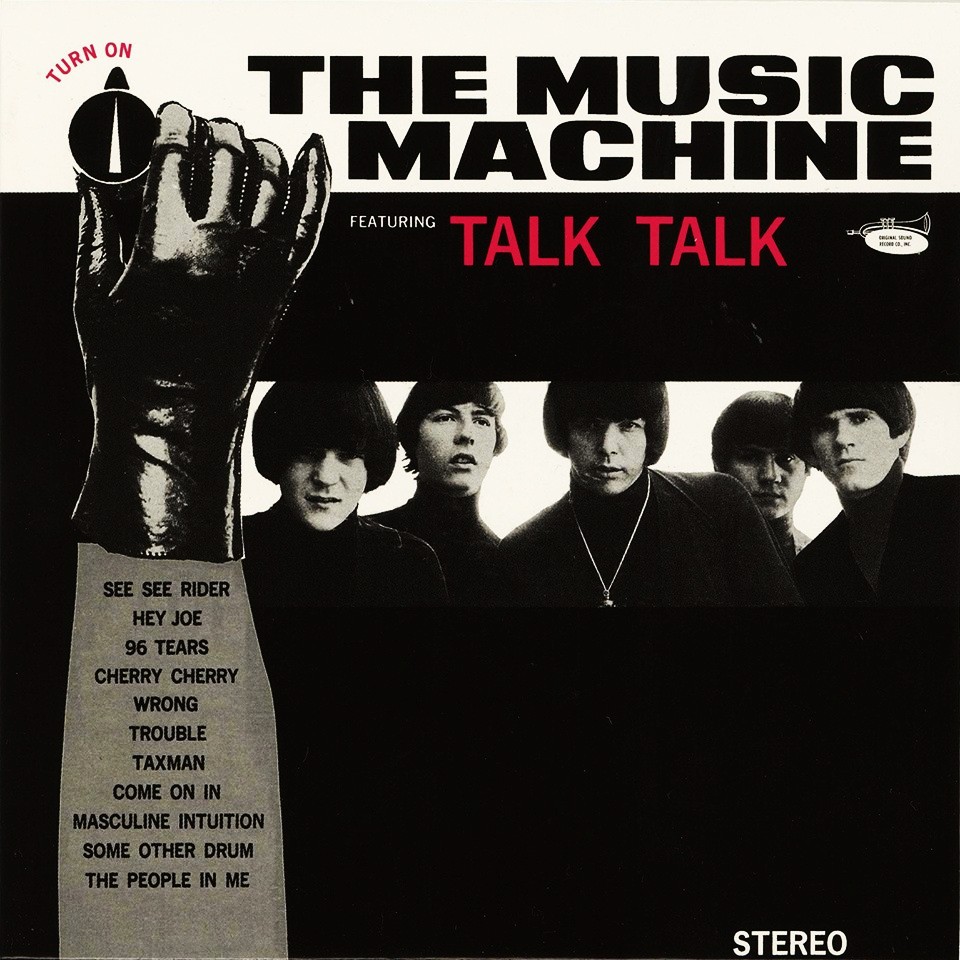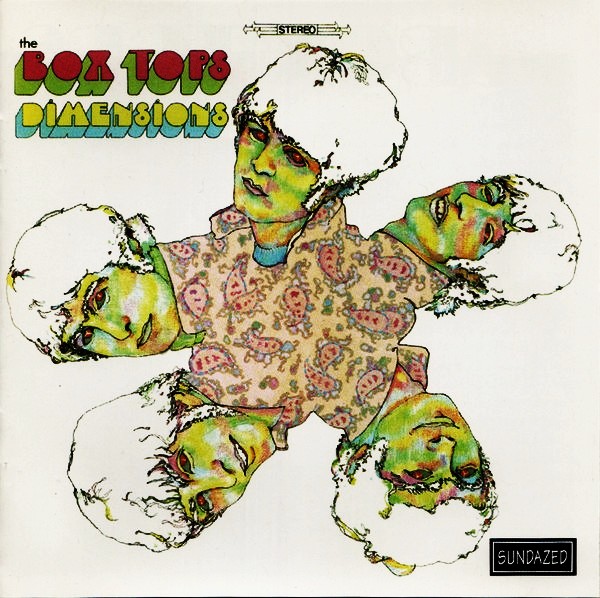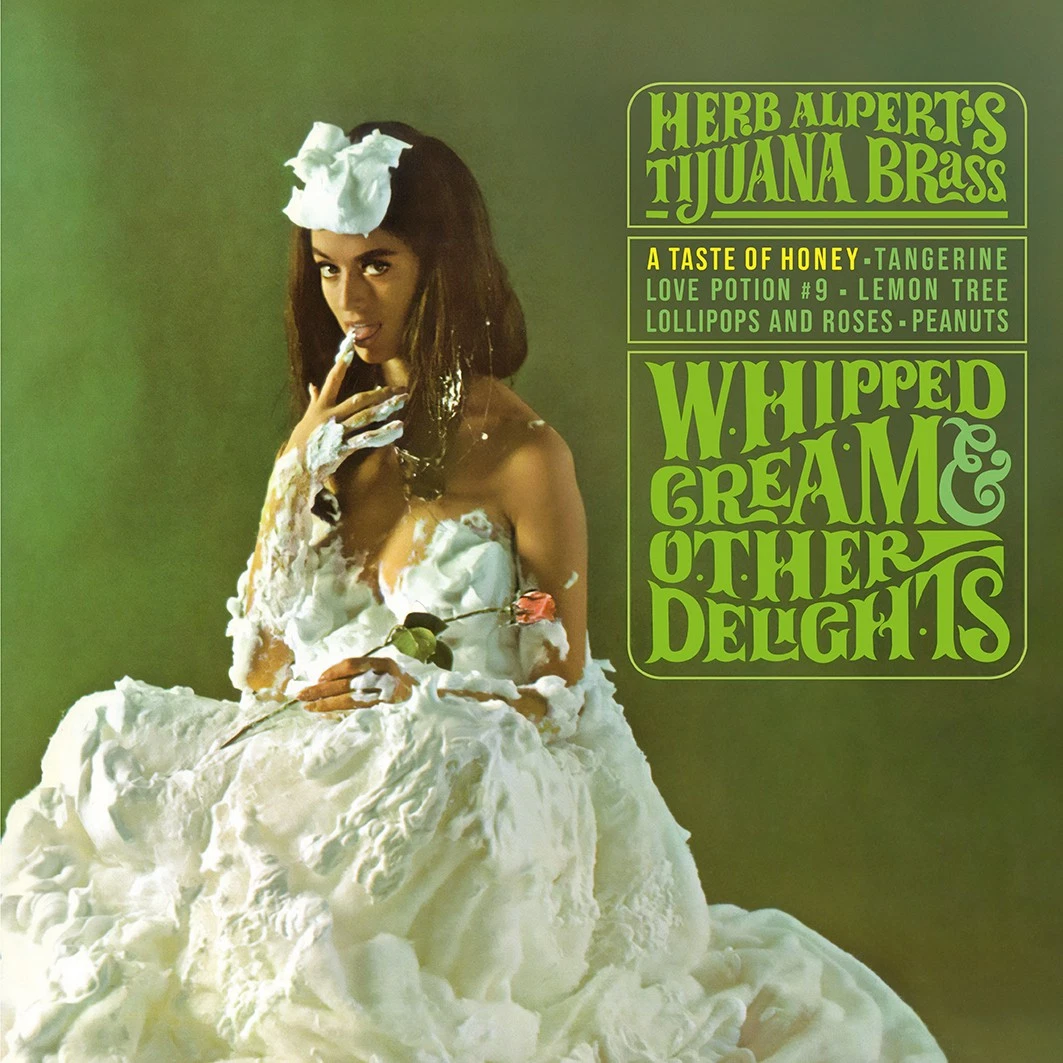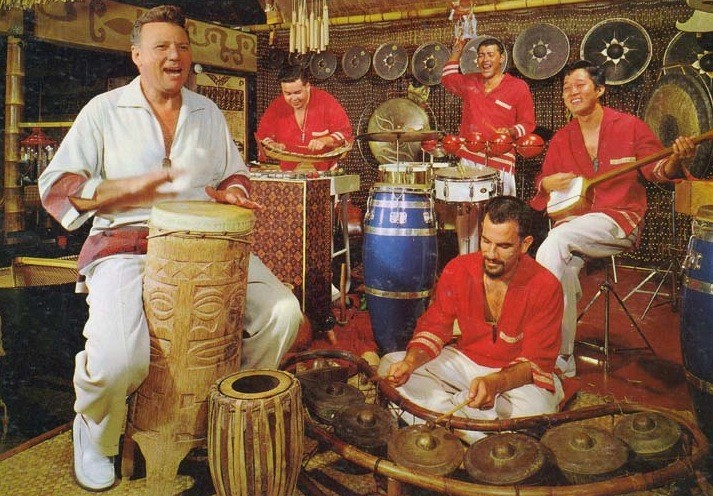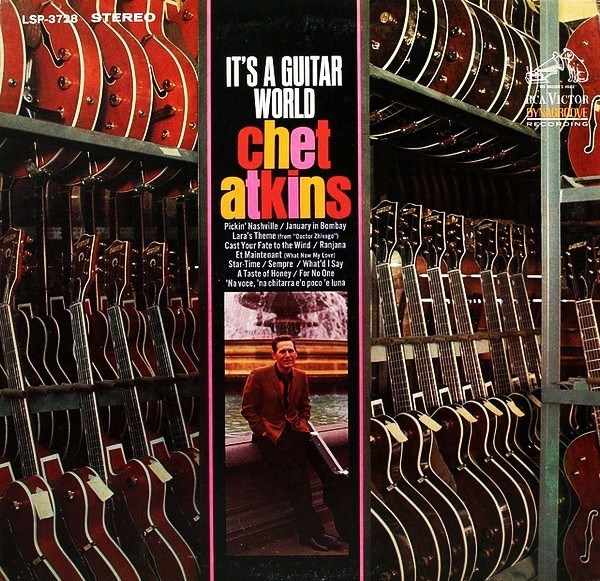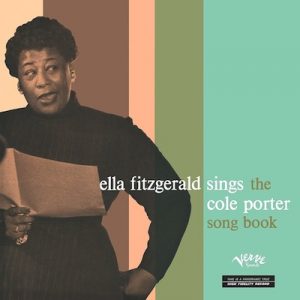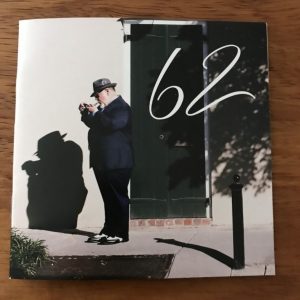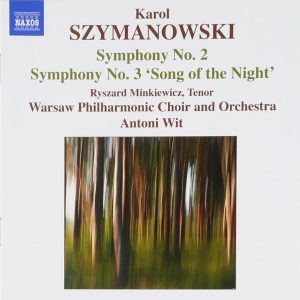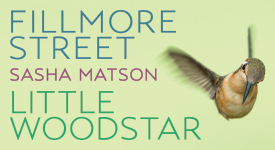In today's world, Eydie Gormé (1928-2013) is most famous for being part of a successful singing duo with her husband, Steve Lawrence (1935-2024). As a pair, they were successful from the earliest days of stereo LPs and well into the digital era. They also excelled at comedy, and they looked great too. By all accounts, they were also genuinely nice people, the kind that you'd love to socialize with. During their heyday, they were frequently seen on TV, most notably The Ed Sullivan Show and The Tonight Show Starring Johnny Carson. They also had an extensive performing schedule, especially in their hometown, Las Vegas. And if all of this weren't enough, they also had successful solo recording careers, before and during their work together. My interest in them is focused on the earliest records from their solo careers. Although I enjoy some of Steve Lawrence's early work, including his attempts to sing rock ‘n' roll, I enjoy Eydie Gormé more as a singer.
Let me say it here: I love Gormé's sweet and effortless voice. However, I can't speak for the consistency of her recordings, because I only have two of her albums: the 1957 album that I'm reviewing for this magazine, and Blame It On The Bossa Nova (Columbia CS 8812) from 1963. Although Gormé's first album is a hard-to-to-find title released by Coral (It's on my want list), today's subject is her first album for ABC-Paramount. It's also the first of her collaborations with Don Costa (1925-1983), who worked as an arranger for both Gorme and Lawrence. With its attractive girl-next-door cover photo, the album was clearly intended to look like a debut record. Even the title, which is simply Eydie Gormé (ABC-Paramount 150), helped to create the illusion of a brand album by a brand new and exciting artist. And what an exciting artist she was! I assume that Eydie Gormé was recorded in mono, because it was never issued in stereo. As Gormé started her career fronting big bands, it's fitting that her first properly-marketed album was recorded within her comfort zone, with a big band, and a turbo-charged Basie-flavored one at that.
Eydie Gormé opens with the Ben Oakland-Oscar Hammerstein classic "I'll Take Romance." If you're wondering who is best associated with this song, it's Gormé. The single achieved the chart position of #65 in April of 1957. Originally composed for singer Grace Moore for the 1937 film I'll Take Romance, the song obtained a life of its own as a swinging standard. I learned it from June Christy, and for a moment I pondered over whose version is better. This was an act of silliness. They're both great. Gormé always had the better vocal range, but The Misty Miss Christy, whose voice was deeper, made it sound, for a lack of better words, "jazzier." Gormé's version opens with her a capella voice and her prominent snapping fingers. The band starts blowing the roof off three seconds later. I wish I knew who the musicians were, because they sound a lot like Count Basie's band. The rhythm-keeping guitarist sounds like Freddie Green, and the drummer sounds exactly like Sonny Payne. My scribbled notes say "she's so good," and that's because she is just that.
Cut three is "Fine and Dandy." Fifties music aficionados would associate this song with Doris Day. Apparently, so did Gormé, as she opens the song with a pretty good impersonation of Day. I really don't need a Doris Day impersonator, as I have great sounding records of the real thing. However, Gormé's cool-school adaptation works on an entirely different level. Her singing is sublime, and so is the walking bass. I'd love to know the pianist's name, because he or she is laying down some very cool licks. In all, this cut is a great example of cool-school vocal jazz.
Side one closes with one of the most exciting moments on the album. It's the swinging standard "Too Close For Comfort." When I Googled the title to see who else recorded it, I discovered that I already had Frank Sinatra and Mel Torme. And, of course, nobody could swing a song better than they could. However, let me tell you, Gormé could swing with the best of them. This is also the album's sonic highpoint, as she sounds as right-there between my speakers as any audiophile could ask for. The swinging-their-butts-off band opens with the drummer smacking the living daylights out of his snare drum. He then continues his primal rhythm with a cymbal crash, and it's right then that we get introduced to the screaming brass section. Again, the drummer sounds just like Sonny Payne, as the Basie vibe is so prevalent. And, again, the words "she's so good" apply, because Gorme sounds so damn good. This is caffeinated big band jazz at its very best.
Side two opens with a departure from the big band. Here we get the sad ballad "Guess Who I Saw Today." It's the sad tale of a woman who goes out for a bite. While in a restaurant, she sees across the room her husband with another woman. When he gets home unusually late from the office, she tells him a story of who she saw in a little French cafe. The song opens with a great sounding piano followed by a gaggle of strings. Gormé's voice is lovely, but she's just not the right singer for this song. Audrey Morris delivered the bluesy goods on her album, Bistro Ballads ("X" LXA 1028). Morris sings it with only a piano, and her Jerry Southern-like voice is exactly what the song needed. Having said this, Gormé's voice is wonderful, but the feeling of despair that Morris displays is missing.
In stark contrast to the last cut, cut five is a great performance of George and Ira Gershwin's "How Long Has This Been Going On." On this cut, I'm happy to hear the return of jazz instrumentation. We get a piano, a brushed snare, vibes, and muted horns, and in my opinion, these are the right ingredients for this song. There are many recordings to choose from, and for me, there's none finer than Chris Connor's 1954 Bethlehem recording. However, to be fair, I'm addicted to most of Connor's early work. Connor sounds sultry, Gormé sounds cute and naive, and both of them appeal to me.
Side two closes with that powerful and unidentified big band blowing up a storm. The song is "The Gypsy In My Soul." Gormé has stiff competition from Margaret Whiting whose 1948 record, with a big band, also blew up a storm. There's also Doris Day's sassy version from her album, Day By Day (Columbia CL 942). I also have Whiting's stereo redo on Dot. With so many to choose from, what's a record collector supposed to do? I say play ‘em all!
The sound on this album varies from decent to downright excellent. It's not unprocessed, but, rather, I see it as mildly enhanced HiFi. It's a typical mid-fifties "high fidelity" sound, not unlike Atlantic's sound on Bobby Darin's mono records, or Mel Torme's early recordings on Bethlehem. The use of reverb and compression varies from cut to cut. While most Columbia and Capitol pop vocal records have the same sound on every cut, on this album the sonic signatures of the different sessions are more clearly heard. As stated earlier, "Too Close For Comfort" features the album's best sound, as Gormé's presence in the room is remarkable. In its day, the reverb on this cut would have gone unnoticed, which, by the way, is how reverb is supposed to sound. In fact, I didn't notice it until I played it on my current audio system. I also love the sound on "How Long Has This Been Going On." It's soft and subtle, and every instrument flows into my listening room in an unforced manner. Like the unidentified musicians, it frustrates me that the recording engineer is also unidentified. However, the one and only Rudy Van Gelder identified himself as the mastering engineer by scribing his initials, "RVG," into the dead wax margin of the record.
I would classify Gormé's early work in the same category as Bobby Darin, Jack Jones, and, of course, Steve Lawrence. I love the playful exuberance that these swinging pop singers brought to the microphone. Their Sinatra-influenced combination of jazz and pop was a recipe that an entire family could enjoy. In addition to their mass appeal, their jazz-influenced music also paved the way for jazz artists like Dave Brubeck and Stan Getz to obtain their crossover success.

